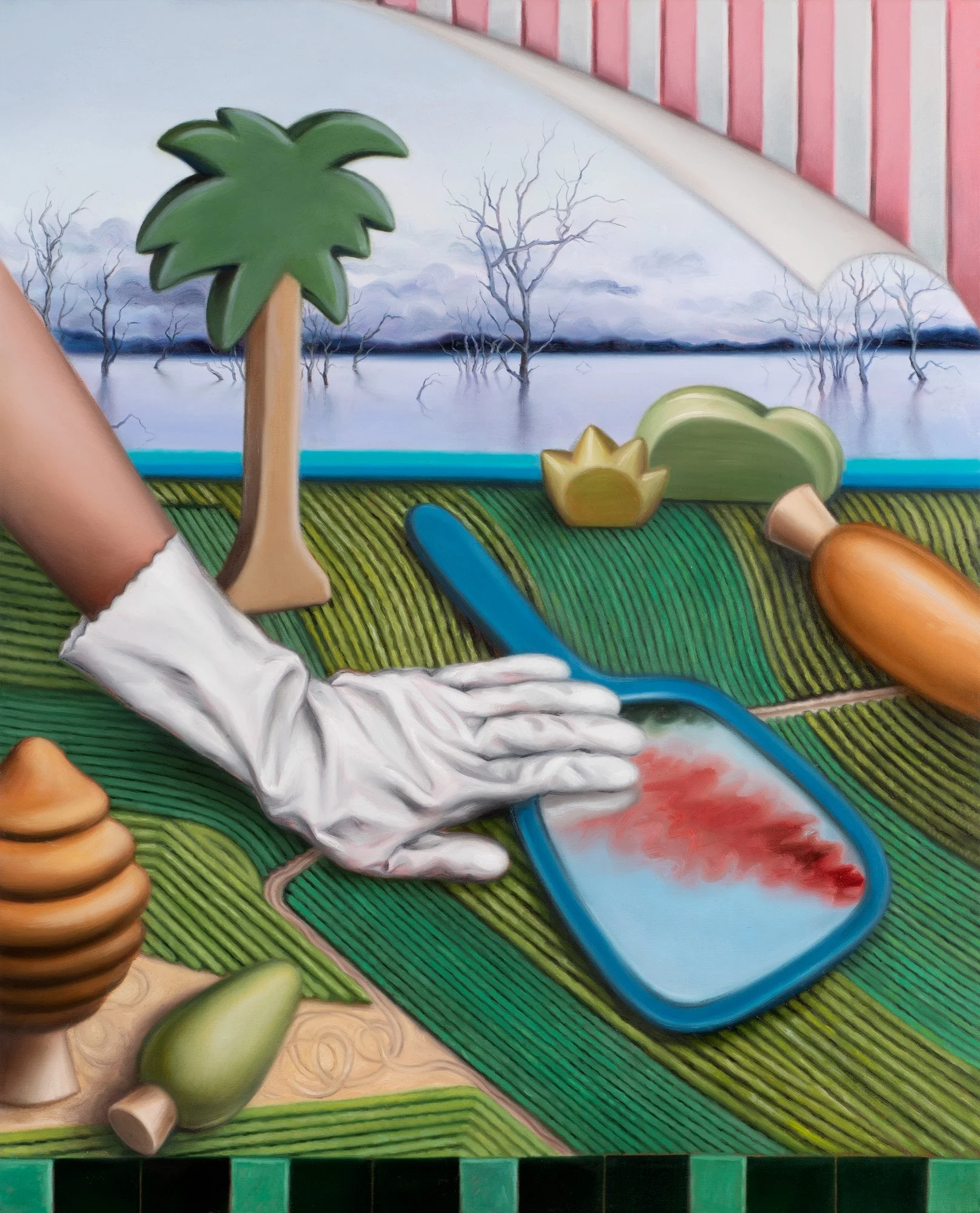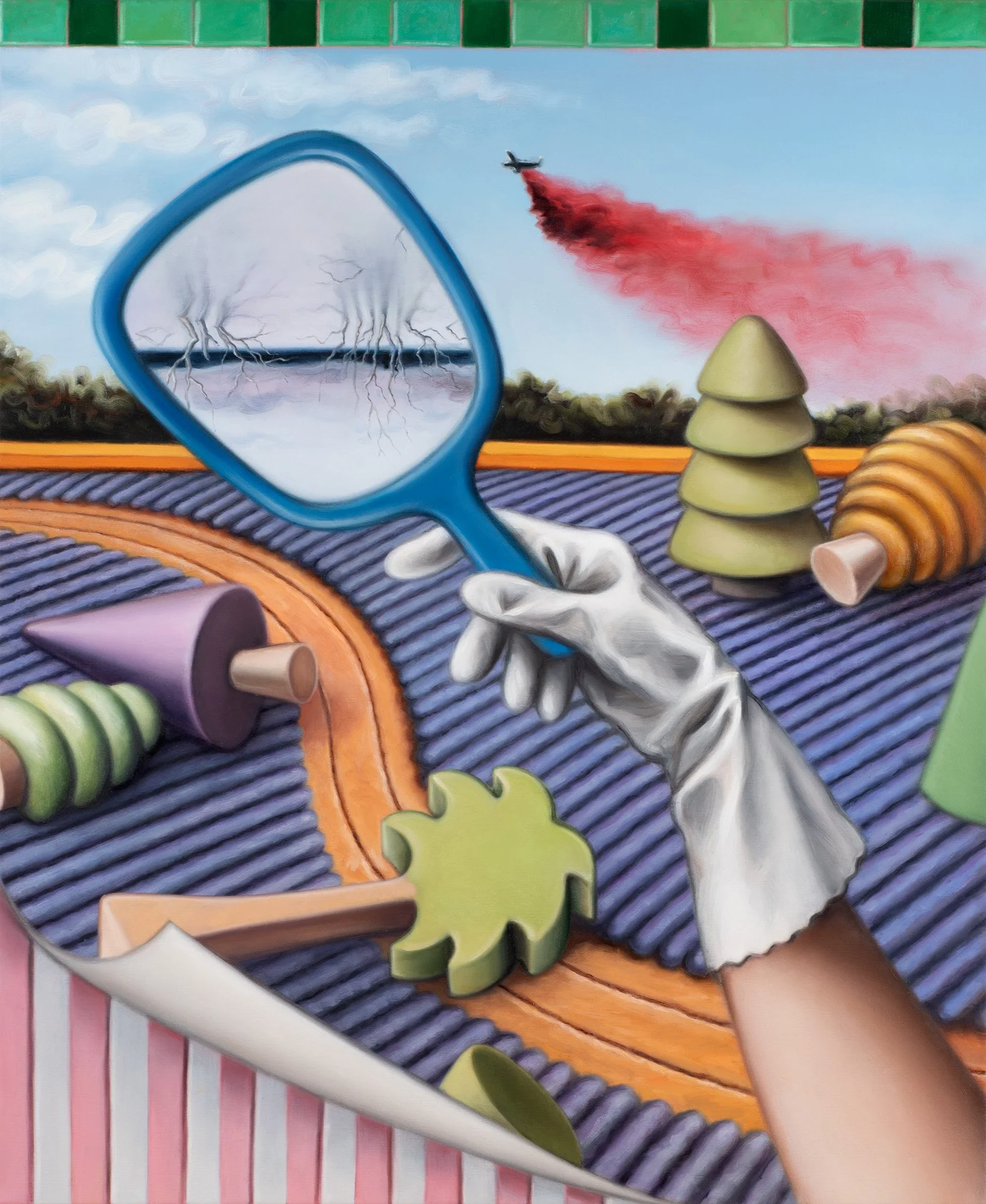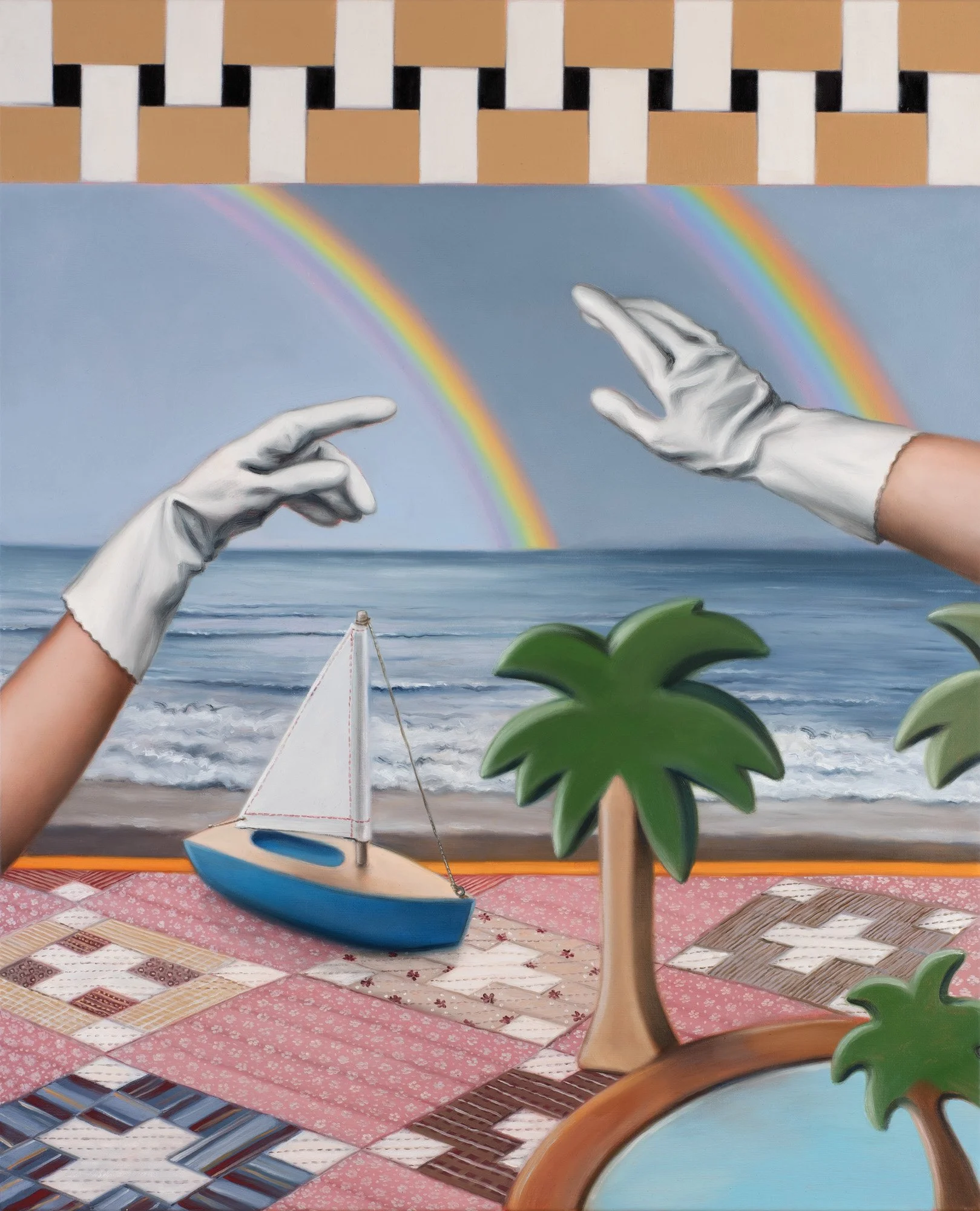A Hopeful Mirage
Bett Gallery, nipaluna/Hobart
8 - 27 July 2022
A Hopeful Mirage I, 2022, oil on linen, 112 x 91.5 cm
A Hopeful Mirage II, 2022, oil on linen, 112 x 91.5 cm
To Catch Something Real, 2022, oil on linen, 112 x 91.5 cm
Within Reach, 2022, oil on linen, 112 x 91.5 cm
Castles Made of Sand, 2022, oil on linen, 91.5 x 112 cm
Every Great Ruin, 2022, oil on linen, 91.5 x 112 cm
The Cautious Optimist, 2022, oil on linen, 60 x 55 cm
The Great Divide, 2022, oil on linen, 60 x 55 cm
The Longest Summer, 2022, oil on linen, 60 x 55 cm
A Hopeful Mirage
Written by Pippa Mott, July 2022
Amber Koroluk-Stephenson’s paintings have always provoked the question of ‘where are we?’, with liquid boundaries between domestic and exterior domains, patchwork perspectives, and conspicuously constructed mises en scène. Throughout A Hopeful Mirage, however, a heightened emphasis on ‘where are we going?’ emerges. The exhibition is a tragicomic meditation on the psychic inertia of a world in flux. Responding to events both local and international, Amber’s landscapes incorporate a new dimension of turbulence. Plumes of bushfire smoke unfurl on the horizon and ghost trees loom on dammed lakes. Elsewhere, palm trees are whipped into a frenzy by gale-force winds and trails of blood-red fire-retardant spill from the skies.
Throughout the body of work, children’s toys such as balancing and stacking games, and minimalist wooden trees are placed with a precision that belies their anomaly. The Cautious Optimist features a paper sunflower whose cheerful smile is at odds with the fire raging in the background. Castles Made of Sand depicts a sandcastle standing perilously close to an advancing tide that has already claimed a fallen palm. In the context of Amber’s compositions, these emblems of infant naivety and world building impulse find their parallel in the ‘ignorance is bliss’ mindset that has on a broader societal level perpetuated dire ecological consequence. Amber explains that ‘the works play with these toys and references to childhood as cautionary tales; representing loss of innocence and the need to rethink our collective roles in ensuring some semblance of stability and prosperity for the Future.’
Theatrical devices such as curtains and trompe-l'œil effects are employed in a tightly controlled manner. Reinforced by the presence of smoke and mirrors, a potent visual metaphor is crafted. In this setting, the gendered and domestic associations of Amber’s archetypal rubber gloves (now loaded with insinuations of hygiene and pandemic preparedness) also imply slight-of-hand. A Hopeful Mirage I offers a glimpse of the inner surface of a white glove. Revealed as yellow, it transpires that the glove has been turned inside out. Instances of inversion and multiplication are recurrent throughout the series, further serving to disorient the viewer (though never without an illusionist’s flourish).
Within the exhibition space Amber’s motifs and designs transcend the canvases - taking physical form and in some cases enveloping the architectural surrounds as wallpaper. ‘Sonny’, her imperviously optimistic sunflower alter-ego, springs to life in front of a bi-fold screen adorned with bushfire scenery. Many works come in pairs characterised by binary compositions and inverted scenarios. Single canvases contain manifold destinies (or climate futures), with variable backdrops appearing like the coulisses of a theatre. In A Hopeful Mirage, the notion of choice – of both action and attitude – comes to the fore. Central to the exhibition is the paradox of optimism; a stance that can permit blind complacency or the motivation to effect change in the world.
Pippa Mott is a Curator and Arts Writer based in Lenapehoking/Brooklyn, New York and is Associate Curator at MONA - Museum of Old & New Art, Hobart.
This project was assisted through Arts Tasmania by the Minister for the Arts.
Installation photographs by Rosie Hastie
Work documented by Jack Bett















